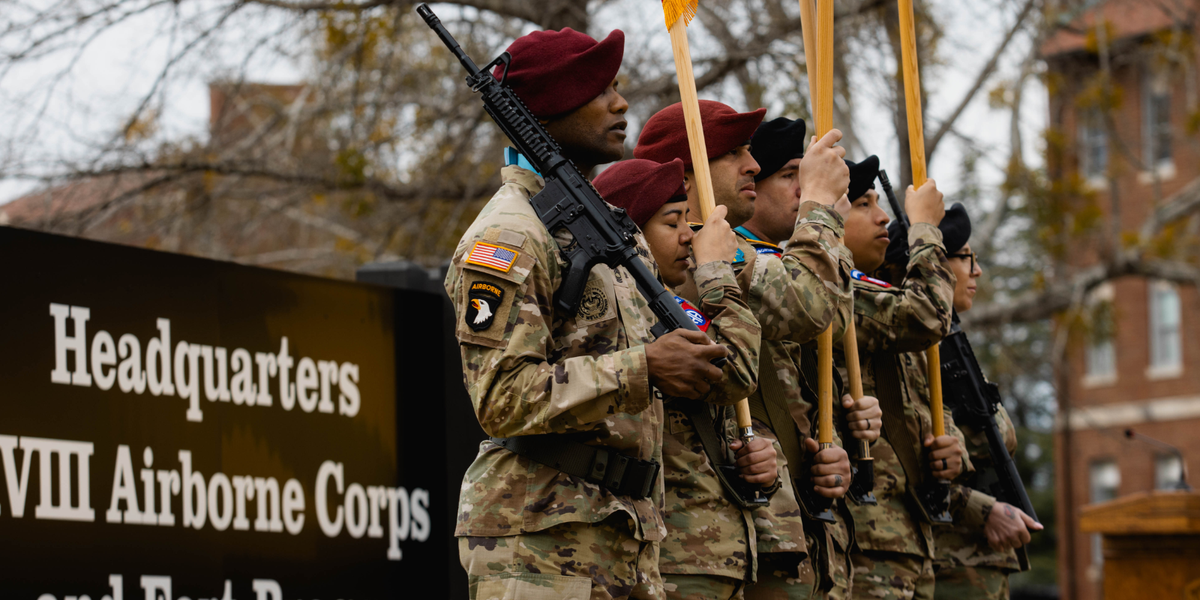The Army is launching its largest command overhaul in decades by merging Army North and Army South into a single four-star Western Hemisphere Command at Fort Bragg. The goal is to streamline leadership, strengthen homeland defense, build partnerships, and reduce bureaucracy.
Army officials describe this as a major pivot toward efficiency and readiness in a leaner force. For service members, changes may mean new duty locations and altered roles. Military families might encounter relocations and new support networks. Civilian employees could face job realignments or transfers. Base communities may see changes in economic activity and daily operations.
What Is the Western Hemisphere Command?
The Western Hemisphere Command, part of the Army’s Transformation Initiative announced in 2025, will unify Army North, Army South, and parts of FORSCOM under one headquarters to simplify command layers and focus resources on readiness.
An official Army memorandum confirmed, “Forces Command will transform into Western Hemisphere Command through the consolidation of Army North and Army South.”
Gen. George said this reform will correct the imbalance of decreasing force and growing headquarters, enabling faster decision-making.
Following the merged leadership, the new command’s responsibilities will span critical roles. The Western Hemisphere Command will oversee homeland defense, partnerships across the Americas, and regional crisis responses, from humanitarian aid to cooperation with allies.
Why Fort Bragg and What It Means for San Antonio
Why Fort Bragg?
Fort Bragg already houses key Army commands like FORSCOM and U.S. Army Special Operations. Its infrastructure and logistics make it ideal for a headquarters coordinating across the Americas.
Army leaders expect the Western Hemisphere Command to formally stand up within six to eight weeks, though officials emphasized that final staffing and movement decisions are still under review.
What Happens in San Antonio?
The decision has specific consequences for Fort Sam Houston, the current base of operations for Army North and Army South. Both headquarters are expected to relocate from San Antonio to Fort Bragg, potentially reducing Army leadership and daily activity at Fort Sam Houston.
This shift could affect civilian jobs, local contracts, and the base’s mission profile. While some operational elements may remain in Texas, most command staff and functions are planned to move, impacting the local workforce and possibly the base’s future role.
San Antonio leaders, in “Military City, USA,” worry about personnel and economic loss. The area supports about 86,000 Army-connected people. If the headquarters leaves, businesses and services reliant on military spending may be affected. Some analysts suggest Fort Sam Houston could gain new missions to offset losses.
For military families stationed in Texas, this change could mean new PCS orders, school transitions, and moving logistics. Families in North Carolina may see an influx of new arrivals, a possible increase in resources, and changes in school and housing availability. These moves may impact daily routines, local school enrollments, and support services.
Timeline and What to Expect Next
Army leaders say Western Hemisphere Command will start operations by year’s end, pending activation. There’s no personnel move date yet, but detailed guidance is coming soon.
For service members and families, key things to track include:
- Official orders and relocation guidance. Stay connected with your chain of command and installation family readiness offices.
- Housing and schooling updates. Fort Bragg may experience a temporary strain on housing and local schools as units transition.
- Career and spousal employment. Employment and education counselors can assist with transfers and continuity planning.
The impact will be felt in both regions. San Antonio may retain some mission support staff, but could lose economic activity and community programs tied to military presence. Fort Bragg is likely to see job growth, more community engagement, and expanded support services due to incoming personnel.
Stepping back, this realignment is part of a broader Pentagon effort to cut overhead, reallocate funds, and modernize command structures.
Why This Change Matters for the Force and Families
This merger is not just about reducing layers; it shapes Army readiness for Western Hemisphere threats. A unified command aims to improve coordination, disaster response, regional training, and multi-domain operations. Bringing Army North and South together strengthens homeland defense and supports allies from Canada to Colombia.
Major changes bring uncertainty. Soldiers and families may face new duty stations and missions. San Antonio may lose personnel, while Fort Bragg prepares to grow. Army leaders stress transparency and communication during this transition.
As Western Hemisphere Command becomes operational, the coming months will test Army readiness, family support, and strategic ability. This realignment redefines Army organization and how land forces are prepared to protect the nation and partner with allies, marking a bold step forward.
Suggested reads:




